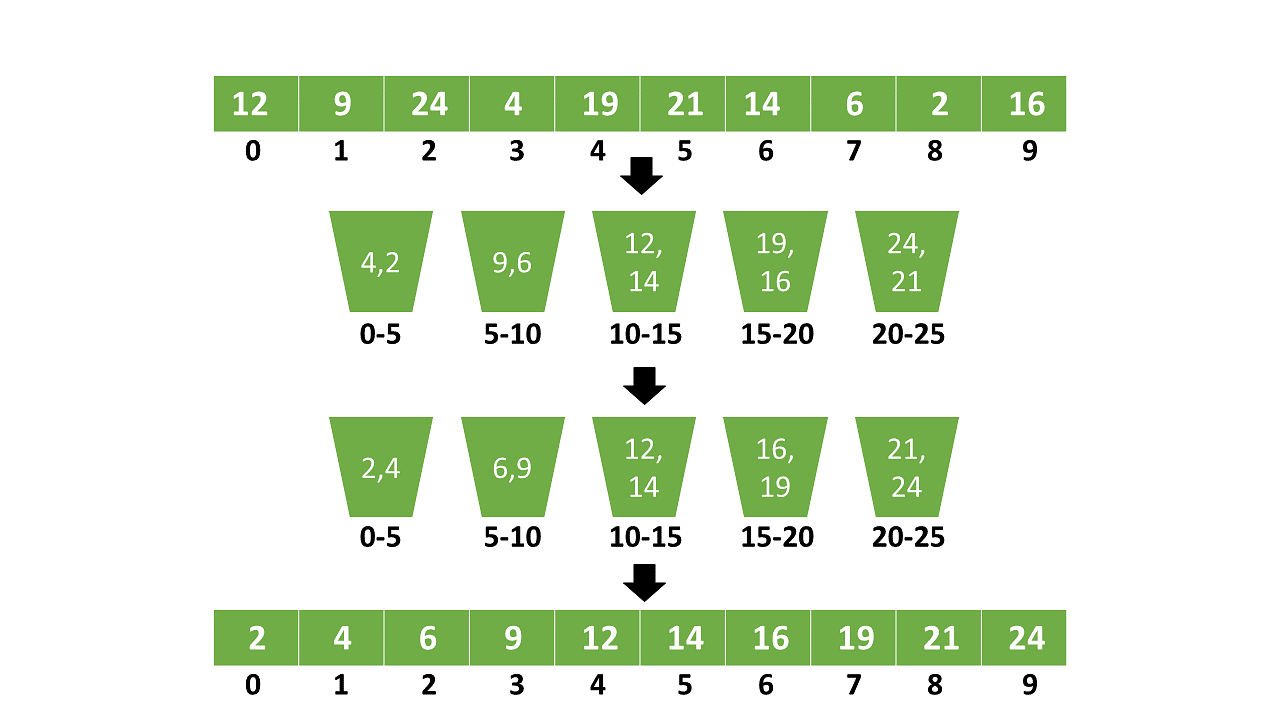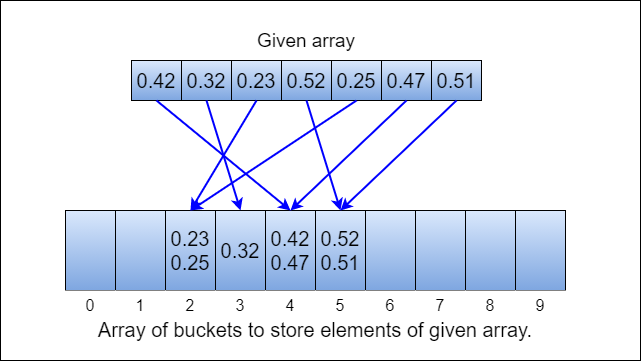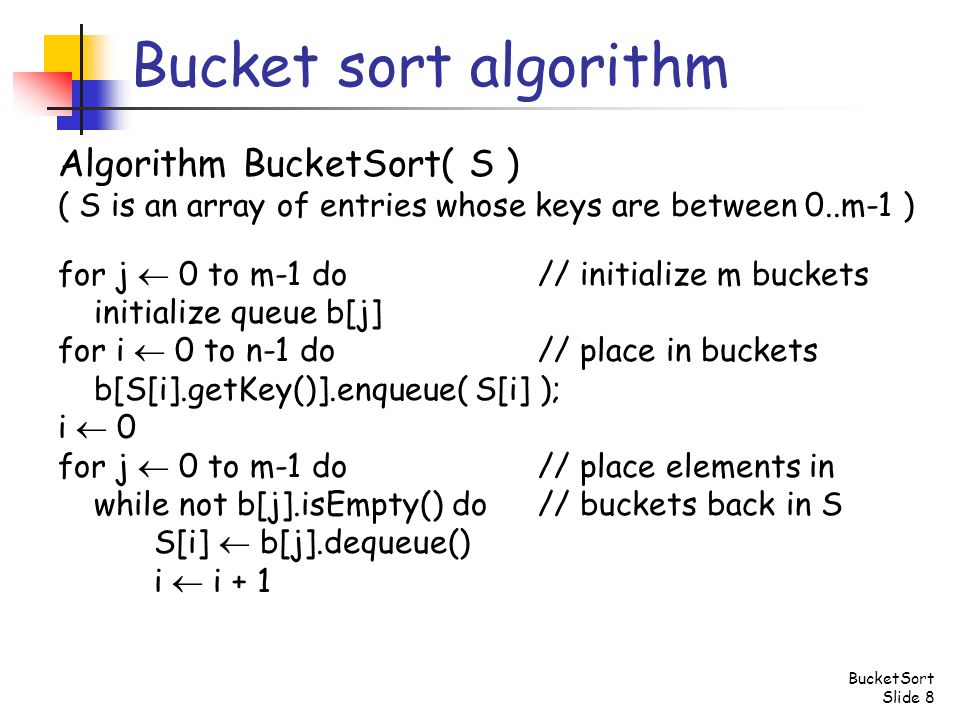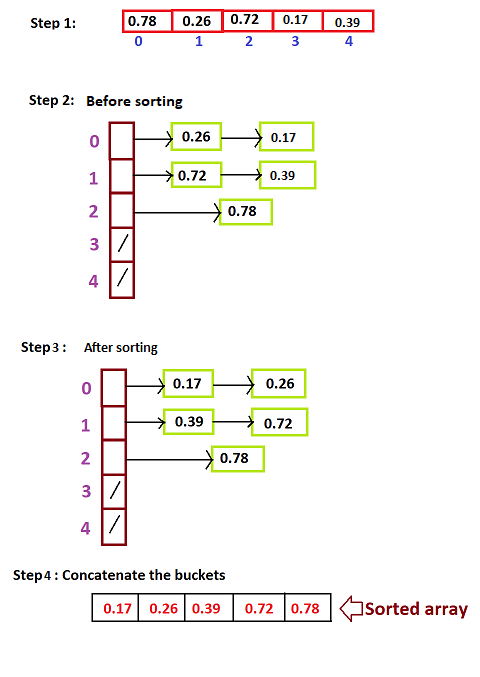N-bucket Algorithm
If the token is not available then the server rejects the. Bucket sorting algorithm achieves On running time complexity in average.
Introduction to Bucket Sort in Java.

N-bucket algorithm. On k for best case and average case and On2 for the worst case. Token is removed from the bucket if its available and accept the request. Bucket sort or bin sort is a sorting algorithm that works by distributing the elements of an array into a number of bucketsEach bucket is then sorted individually either using a different sorting algorithm or by recursively applying the bucket sorting algorithmSet up.
A FIFO queue holds the packets. The complexity of the Bucket Sort Technique. Ω Given an unsorted array of n positive integers bucket sorting algorithm works by distributing the elements into m ordered.
Bucket sort or bin sort is a comparison sort algorithm that works by assigning the elements of an array or list to a number of buckets. Whenever a consumer wants to access an API endpoint it must get a token from the bucket. Of course this is worst case all the elements in one bucket - the algorithm to calculate which bucket to place an element is generally designed to avoid this behavior.
The elements inside each bucket are sorted using any of the appropriate sorting algorithms or recursively calling a. Thus the time is the sum of all of the numbers from 1 to n which is n2 n2 which is On2. The best-case time complexity of.
Now sort each bucket. A FIFO queue holds the packets. The elements within each bucket are then compared to each other and sorted individually by either recursively calling the Bucket sort function or by using a different sorting algorithm.
It is very fast compared to any comparison-based sorting algorithms that usually have a lower bound of n log n. Bucket sort is a stable sorting algorithm and it is not an in-place sorting algorithm. After distributing each bucket is sorted using another sorting algorithm.
As the name suggests in bucket sort we have several groups called buckets each containing specified elements of the input array. Bucket Sort is a sorting algorithm that divides the unsorted array elements into several groups called buckets. On is the complexity for making the buckets and Ok is the complexity for sorting the elements of the bucket using algorithms having linear time complexity at the best case.
If the traffic consists of fixed-size packets eg cells in ATM networks the process removes a fixed number of packets from the queue at each tick of the clock. Bucket Sort is a sorting algorithm. Find maximum element and minimum of the array.
Counting sort can be very efficient if k is much smaller than N. A simple leaky bucket algorithm can be implemented using FIFO queue. Bucket sort or bin sort is a sorting algorithm that works by distributing the elements of an array into a number of bucketsEach bucket is then sorted individually either using a different sorting algorithm or by recursively applying the bucket sorting algorithm.
A simple leaky bucket algorithm can be implemented using FIFO queue. Each bucket is then sorted by using any of the suitable sorting algorithms or recursively applying the same bucket algorithm. Range max - min n n is the number of buckets.
Scatter the array elements to these buckets BucketIndex arri - min range. After that all elements are gathered on the main list to get the sorted form. Finally the sorted buckets are combined to form a final sorted array.
For example a large set of floating-point numbers are in the range from 00 to 10 and uniformly distributed across the range. Even if the elements are not distributed uniformly bucket sort runs in linear time. Bucket sort is a starting algorithm mainly used when we have data uniformly distributed over a range.
Bucket Sort for numbers having integer part. If the traffic consists of variable-length packets the fixed output rate must. Bucket Sort is a sorting method that sorts the elements by first dividing the elements into a few groups called buckets.
Using breadth-first search also guarantees that the solution the script finds is the shortest one in terms of bucket moves. Each bucket can hold a similar type of data. Space complexity can be reduced to Onk by reducing the space to hold all elements and storing pointers to the start the bucket.
The best-case time complexity is Onk while worst-case time complexity is On2. In bucket sort we create n buckets and insert similar types of elements into the buckets. If we use the insertion sort to sort the bucket elements the overall complexity will be linear ie On k where On is for making the buckets and Ok is for sorting the bucket elements using algorithms with linear time complexity at best case.
Bucket sort is mainly useful when input is uniformly distributed over a range. If the traffic consists of fixed-size packets eg cells in ATM networks the process removes a fixed number of packets from the queue at each tick of the clock. Calculate the range of each bucket.
Algorithm for bucket sort is an index-based sorting algorithm. If the traffic consists of variable-length packets the fixed output rate must. Algorithm of Bucket Sort Algorithm BUCKET_SORTA A is an array of size n Create n buckets represented by B for i 1 to n do Insert Ai into bucket BnAi end for i 1 to n do sort each bucket i using insertion sort end Concate all buckets into sorted order Complexity Analysis.
A good thing about this particular application of the algorithm is that we can build the graph just as we need it potentially reducing memory usage and increasing the speed of the algorithm a bit. The worst-case space complexity for the bucket sort algorithm is Onk where n is the number of elements and k is the number of buckets. Assume that we have a bucket the capacity is defined as the number of tokens that it can hold.
It occurs when the elements are distributed randomly in the array. Create n buckets of calculated range. Since the bucket number is at most sqrtN and the number at the head or tail is also at most sqrtN the whole querying complexity is OsqrtN Whats interesting is by maintaining some prefix sum we can swap the time complexity of modifying and querying that is O1 query and OsqrtN modifying.
The sorting technique using which the elements of the given array is distributed into many numbers of buckets to sort each of the bucket by using different sorting algorithms or by using bucket sorting algorithm recursively is called bucket sort in Java whose space complexity is O1 worst case complexity is On2 best case complexity. This technique is most useful when the input is evenly spread throughout a range.

Bucket Sort Algorithm Learnersbucket
Bucket Sort Growing With The Web

Bucket Sort Algorithm Time Complexity Pseudocode Simplilearn

4 8 Bucket Sort Algorithms In A Nutshell Book

Bucket Sort Visualize Design And Analyse By Vikram Gupta Javarevisited Medium

5 The Token Bucket Algorithm A Before B After 1 Download Scientific Diagram

Complexity Of Bucket Sort Uniform Keys Stack Overflow

Bucket Sort And Radix Sort Ppt Video Online Download

Bucket Sort Algorithm And Bucket Sorting Program In C






Posting Komentar untuk "N-bucket Algorithm"